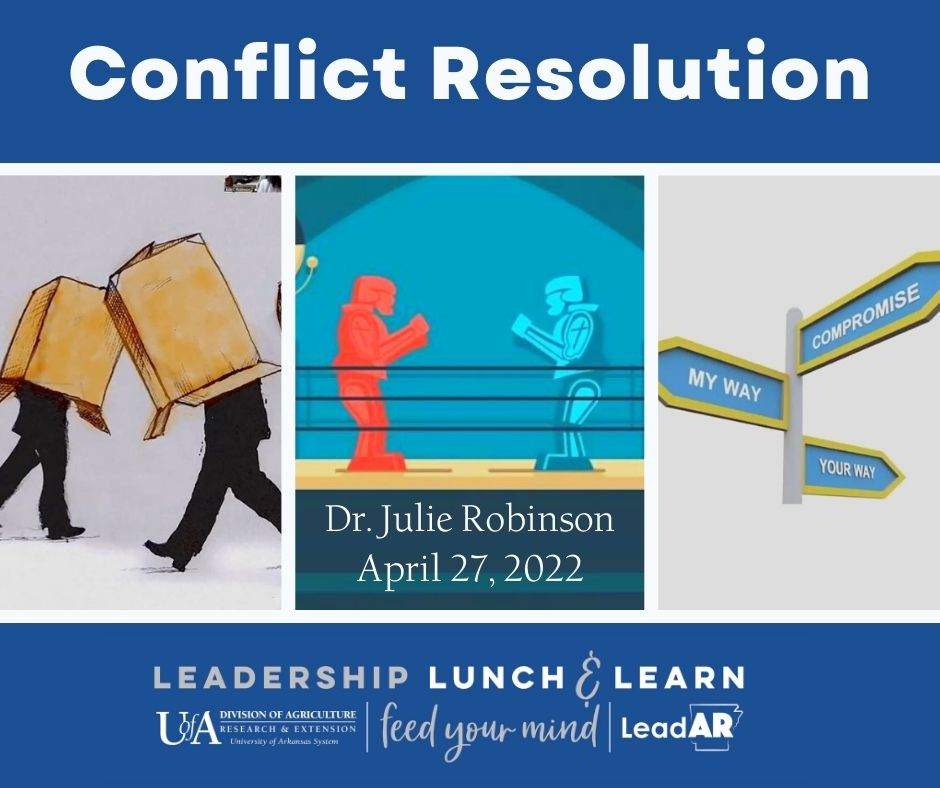Posts
Contact
Lisa Davis
Program Associate-Leadership
Phone: 501-519-5472
Email: ldavis@uada.edu
University of Arkansas System Division of Agriculture
Cooperative Extension Service
2301 S. University Avenue
Little Rock, AR 72204
April Leadership Lunch and Learn: What is Conflict and How Do You Manage It?
In the April 2022 Leadership Lunch and Learn (LLL) session, participants explored
the definition of conflict, what causes it, and five styles used to manage it.
Dr. Julie Robinson, associate professor and leadership specialist at the University of Arkansas System Division of Agriculture, Cooperative Extension Service, shared her insights on the benefits and challenges of conflict and methods to manage it.
She defined conflict with several definitions including:
- Perception of mutual interference,
- A process that begins when goals of one party are frustrated by another, or
- A struggle between people which may be physical or between conflicting ideas.
What causes conflict?
Robinson shared that there are many, many causes of conflict. A few might include:
- History
- Different values and guiding principles
- Different perceptions or positions on the issue
- Lack of clarity
- Resource scarcity
- Incompatible goals
- Structural factors (size, routinization, specialization, reward systems)
- Conflicting thoughts/needs within an individual
- Lack of communication
She also shared there is no single best way to handle every conflict. Each of the five conflict-handling modes has its own sets of benefits and costs. Each can be highly effective if used properly in the right circumstance. The key to successfully utilizing each conflict is based on knowing when to use each mode, and then having the skills to perform each mode well.
Five Conflict Handling Modes
Here are the five conflict handling styles and their potential benefits and costs.
- Competing: Great at standing up for what they believe in; may be seen as insensitive to others and selfish.
- Collaborating: Great at seeing both sides of a discussion and allowing others to have an opinion; may be seen as someone who doesn’t want to take the responsibility for important decisions.
- Compromising: Great at making fast decision where it meet the needs of both parties; may be seen as someone who just wants to move on and doesn’t want to spend time debating and discussing the issue in full.
- Avoiding: Great at side-stepping or allowing others the opportunity to run with the topic; may be seen as some who doesn’t care, not interested, or wants an easy life.
- Accommodating: Great at allowing other to have their way and tolerating decision they don’t like; may be placid and amenable. Happy to go with the flow and not rock the boat.
The skill of one’s performance in each conflict-handling mode relies on his or her ability to recognize the benefits of a mode while also being able to minimize its cost.
The next session in the LLL series will be May 25, 12:15 – 1 p.m. on “Critical and Strategic Thinking” presented by Dr. Hunter Goodman, UADA assistant professor, community and economic development.